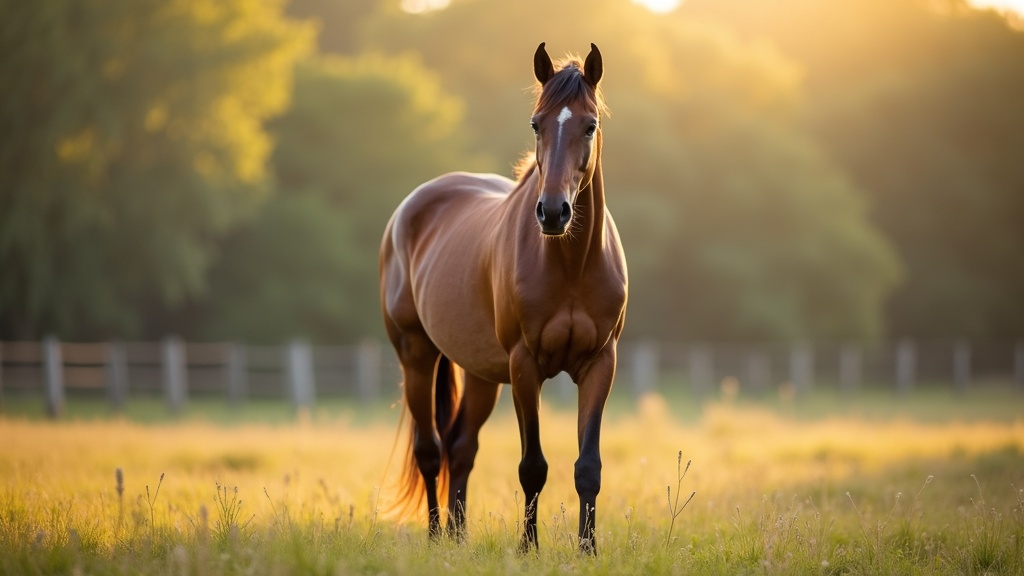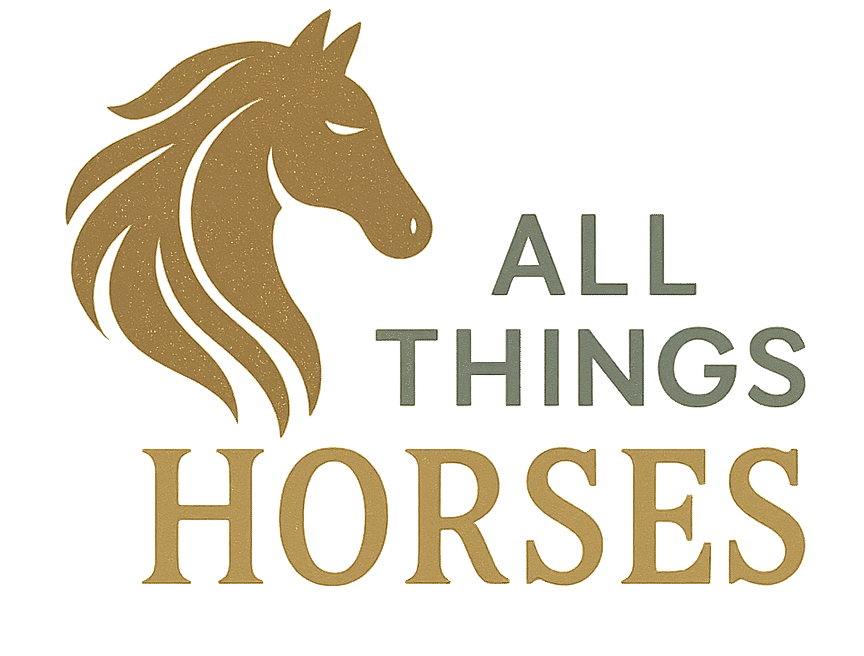Training a skittish horse can feel like a big challenge, but with the right approach, you can help your nervous equine buddy become more relaxed and confident. Horses are naturally prey animals, so being jumpy is part of their survival instinct. I’ve found that patience, understanding, and gradual steps are the best ways to see progress. If you’re new to working with a spooky or anxious horse, I’m here to share what’s worked for me and what you can do to help your horse chill out and trust you more.

Why Horses Become Skittish
It helps to know why horses get skittish in the first place. Whether it’s their genetics, a negative past experience, or a simple lack of exposure to new things, there are lots of reasons a horse might feel uneasy. Some horses just come wired with a sensitive nature. Others have picked up their fears through rough handling or scary situations earlier in life.
Building confidence in a horse isn’t about fixing them. It’s about meeting them where they are and helping them see the world as less threatening, one small step at a time.
Basics to Set Up for Success
A nervous horse looks to you for cues, so being consistent helps them feel safe. Setting up the right environment and routine from day one goes a long way. Here are a few things I always keep in mind:
- Routine: Horses feel safe when they know what to expect. Feeding, grooming, and activity at similar times each day builds trust.
- Calm Demeanor: Horses can mirror your feelings. Keeping your own actions slow, gentle, and predictable lets your horse know there’s nothing to worry about.
- Safe Space: Make sure your training area is free of things that startle easily. No flapping tarps or sudden loud noises if you can help it.
Along with these, having consistent feeding times, offering regular turnout, and providing your horse with a comfortable place to rest are all pieces that give your horse that feeling of security. For many, this foundation is enough to slowly coax their personality out and pave the way for smoother training sessions down the road. Remember, what may seem minor to us, like a change in the routine or a different handler, can feel major to a skittish horse—so keeping an eye out for those small details matters.
First Steps: Making Friends With Your Horse
Before jumping into serious training, I always spend time just hanging out with my horse. Simply being there without demanding anything allows your horse to relax around you. Grooming, gentle scratches, or standing nearby while your horse grazes are all easy ways to build a positive connection.
If your horse backs away or doesn’t want to be approached, work at their pace. Sometimes I’ll just sit outside the fence reading a book until the horse comes over to check me out. Pressure-free time together shows your horse you’re safe to be around.
Trust doesn’t show up all at once. It grows over days and weeks. Those early moments when your horse chooses to come closer on their own or lowers their head near you are small victories that hint at future progress. Celebrate the little things—and don’t expect instant results. Comparing your horse’s progress to others isn’t helpful, since every horse brings their own personality and experiences to the table.
Break Down Desensitization Step by Step
Desensitization is the process of teaching your horse not to react or get scared by things that bother them. You’ll want to start with something that only slightly worries your horse, not their biggest fear. Working through smaller triggers first gives your horse quick wins and builds their confidence for the bigger stuff.
- Pick One Object: Start with a plastic bag, soft rope, or any nonthreatening item. Hold it at a safe distance and let your horse take a look.
- Watch Their Body Language: Ears, eyes, and muscles will tell you how your horse feels. If they tense up, pause and let them settle before getting closer.
- Reward the Try: If your horse stands still, sniffs, or even relaxes the tiniest bit, reward them with a scratch or treat.
- Step Back When Needed: If your horse wants to move away, let them. Staying calm and not pushing helps build trust.
- Repeat and Build: As your horse becomes more confident, bring the object closer or use something a bit more challenging.
If your horse is skittish about touch, start with less sensitive areas like the shoulder or neck before moving toward legs or ears. Each step, no matter how minor, should feel manageable for your horse. If your horse gets too overwhelmed, take a break and try again later. Progress made at a steady, comfortable pace is better than pushing too far and having a setback.
Quick Guide: Positive Training Techniques for Spooky Horses
Sticking to gentle guidance and lots of patience can work wonders so your horse learns at their own pace. Here are a few tips:
- Short Sessions: Keep initial training sessions between five and fifteen minutes. Ending on a good note (even a tiny improvement) makes the training positive.
- Body Language Basics: Horses notice everything. Facing slightly away, keeping your shoulders relaxed, and breathing deeply help your horse know you’re not a threat.
- Use of Treats and Praise: A small tasty treat or a gentle voice is a great way to show your approval.
- Keep Progress Gradual: Don’t jump from one training step to something much harder right away. Give your horse time to get comfortable.
- Let Them Think: Pauses during training help the horse process what just happened. Sometimes you’ll see a gentle sigh or relaxed ear flick after a pause. These are great signs!
With patience and consistency, your nervous horse can start to trust you and become braver in different situations. If your horse struggles with a certain step, it’s okay to go back to an easier one. The important thing is to make every session feel safe and rewarding rather than stressful. Praise, calm words, and scratches are often better rewards than treats, depending on your horse’s temperament.
Things Worth Considering Before You Start Training
Training a spooky horse isn’t always straightforward. Personalities, past experiences, and your own skills all play into the results. Some days will feel easy, and others will test your patience. Here are a few things to keep in mind:
- Know Their Triggers: Try to figure out specific things that scare your horse, like plastic bags, quick movements, or even loud vehicles, and note them down.
- Patience is Key: Sometimes it feels like progress is slow or even stuck. That’s normal! Pushing too hard is usually a setback, not a shortcut.
- Health Checks: If a horse is unusually flighty or gets upset easily, a quick check by a vet makes sense. There could be pain or discomfort you can’t see.
- Safety for Everyone: Wear sturdy boots, gloves if needed, and always keep an escape path clear just in case.
Understanding Your Horse’s Body Language
Reading your horse’s signals is really important. Tense muscles, wide eyes, or flared nostrils say your horse is on edge. Yawning, licking lips, or dropped heads signal calm. Being able to spot these shifts early lets you change things up before your horse becomes overwhelmed.
Managing Your Own Nerves
Horses pick up on our emotions more than we think. If you show up feeling nervous or impatient, your horse will likely do the same. I try small breathing exercises or a few stretches before a session, which helps a ton if you feel anxious yourself.
Environmental Prep
Working with a skittish horse goes smoother in a quiet place without loud noises, barking dogs, or lots of people. I always double-check the training area and let others know before I start working with an easily startled horse. A calm space is especially helpful for horses that are new to handling or have a history of spooking. Planning ahead keeps your session focused and reduces the risk of accidents.
Tips and Tricks from Experience
I’ve tried lots of approaches with nervous horses over the years. There are some extra tricks you might find handy:
Pairing Up: Sometimes, training with a calmer horse nearby gives the nervous horse confidence. They’ll take cues from the more relaxed horse, making sessions smoother.
Desensitize to Touch: Run your hands all over your horse’s body, pausing if they get jumpy. This really helps during vet exams or grooming time.
Lead With Curiosity: Allow your horse to approach new objects on their terms: sniff, paw, or bump it. Letting them be curious instead of forcing the issue builds trust.
Stay Consistent: Even if things didn’t go perfectly yesterday, keep showing up in the same calm way. Horses notice these patterns.
What matters most is showing your horse that nothing truly scary is going to happen during your time together. Horses build trust through repetition and predictability more than anything else. Feed, exercise, and interact consistently, even on days you’re not specifically training. Over time, this steady approach makes unfamiliar things less alarming for your horse.
Adding some groundwork exercises, such as simple leading patterns or obstacles, is another way to help your horse focus on you instead of their surroundings. Change up your route or introduce something small, like walking over a pole, to encourage curiosity and teach your horse that new experiences are safe when you’re together.
Common Questions About Training Skittish Horses
Here are some answers to questions I get asked a lot when it comes to working with spooky or anxious horses:
Question: What’s the first thing I should do with a nervous horse?
Answer: Start by spending quiet time with your horse on the ground, without any demands. Simple grooming or standing together helps your horse relax before you try anything more adventurous.
Question: My horse spooks easily at objects. How do I fix this?
Answer: Pick one of the less scary objects and slowly introduce it, rewarding your horse for any sign of calm. Let your horse decide the pace, and don’t push them too close too fast.
Question: How long does it usually take for improvements?
Answer: Every horse is unique. Some show quick progress in a few weeks, while others need months. Sticking with short, positive sessions adds up over time.
Question: Should I consult a professional trainer?
Answer: If you’re feeling unsure or progress seems stalled, don’t hesitate to reach out for help. A qualified trainer with experience in gentle methods can give you new ideas and help move things along safely.
How Building Confidence Helps in the Real World
Helping your horse be less reactive pays off way beyond training sessions. Less skittish horses are easier to handle for farriers, vets, and when out on trails. I remember working with a young gelding named Jasper who panicked every time he saw a wheelbarrow. Over a couple of months, we broke the fear down step by step, and now he walks by anything, calm as can be. Little wins like that make a massive difference for both horse and rider.
- Easier Vet and Farrier Visits: Your horse stands better, leading to less stress for everyone.
- Bigger Adventures: Once your horse trusts you, trail rides, shows, or even new paddocks become more fun and less nerve racking.
- Better Bond: A horse that trusts you is a true partner, not just an animal to be managed.
Building a braver, more relaxed horse is all about time, patience, and making things positive. Every bit of progress gets you and your horse closer to having fun together with a lot less stress. Stick with it, trust the process, and you’ll start to see those nerves fade away.
